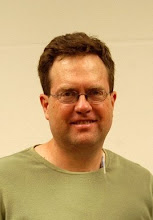 |
| Albuquerque Stake members en route to the Arizona Temple |
The man on the far left is George Lemmon, the stake president (and later president of the East Stake). To his left are John and Guylynn Hudiburg, my friend Wally Steffensen's in-laws and long-time 4th Warders. To their left are John and Donna Eilar, old 2nd Warders; John was our dentist when I was growing up, and Dorine worked for him in 1980-81. The next few people (the taller fellow in back, the older lady in the light-colored coat, the lady in the striped dress, and the younger blonde lady with the dark collar) are unidentified. The heavy-set lady (face partially obscured) and the balding man behind her are probably Gaye and Al Schofield, who lived in Los Alamos at the time; I remember they had a son named Lyle who was about my age. The lady in the suit with the dark trim is Mandona Payne, Vearle's wife (and Vern's mother). The fellow behind Sister Payne is Chuck Goodwin, who for a time was Dorine's family's milkman (remember milkmen?), and the man behind him is my father, Stan Kartchner, who drove the (Greyhound) bus on most of these trips.
Dorine's dad (and my father-in-law), Lynn Wilson, is on Brother Goodwin's left. The taller man with glasses over Lynn's left shoulder is unidentified, although Wally Steffensen thinks his name may be Bill Jemison. The next couple are Patty and Jerry Cole, long-time 5th Warders, whose daughter Paula Mortensen has played a lot of softball with Dorine's city-league team. (I'll always remember Jerry as being my antagonist [and a lot of other people's] when he refereed church basketball games during my singles-ward days; thankfully, I don't bear him a grudge now, and hopefully he can say the same about me.) The white-haired man with the glasses over Brother Cole's left shoulder is Vearle Payne, and Paula Mortensen has identified the couple on the far right as Marilyn and Buddy Justice, who I assume were friends of the Coles and fellow 5th Warders. (My friend Bob Maes grew up in the 5th Ward, so he knew the Coles and probably knew the Justices as well.)
I'm always fascinated when photographs like this one come to light; it makes me wonder what else could be stored in other people's attics or garages. Years ago, another ex-stake president of ours, Lyle Porter, and his wife Wilma wrote a book chronicling the history of the LDS Church in New Mexico (see illustration). I don't remember if the book, now long out of print, contained many photographs, but several dozen pictures like this one would have been perfect illustrations for it. (The Porters, both of whom have now died, were the parents of Bruce D. Porter, a member of the First Quorum of Seventy and still the only LDS general authority to have grown up in Albuquerque.)
[Update 2/28/14: I purchased a copy of the Porters' book on eBay. It does contain a few photographs, but they aren't particularly interesting to me; additionally, the book must have been put together from photocopies, as the images in most of the photos are poor and difficult to make out.]

